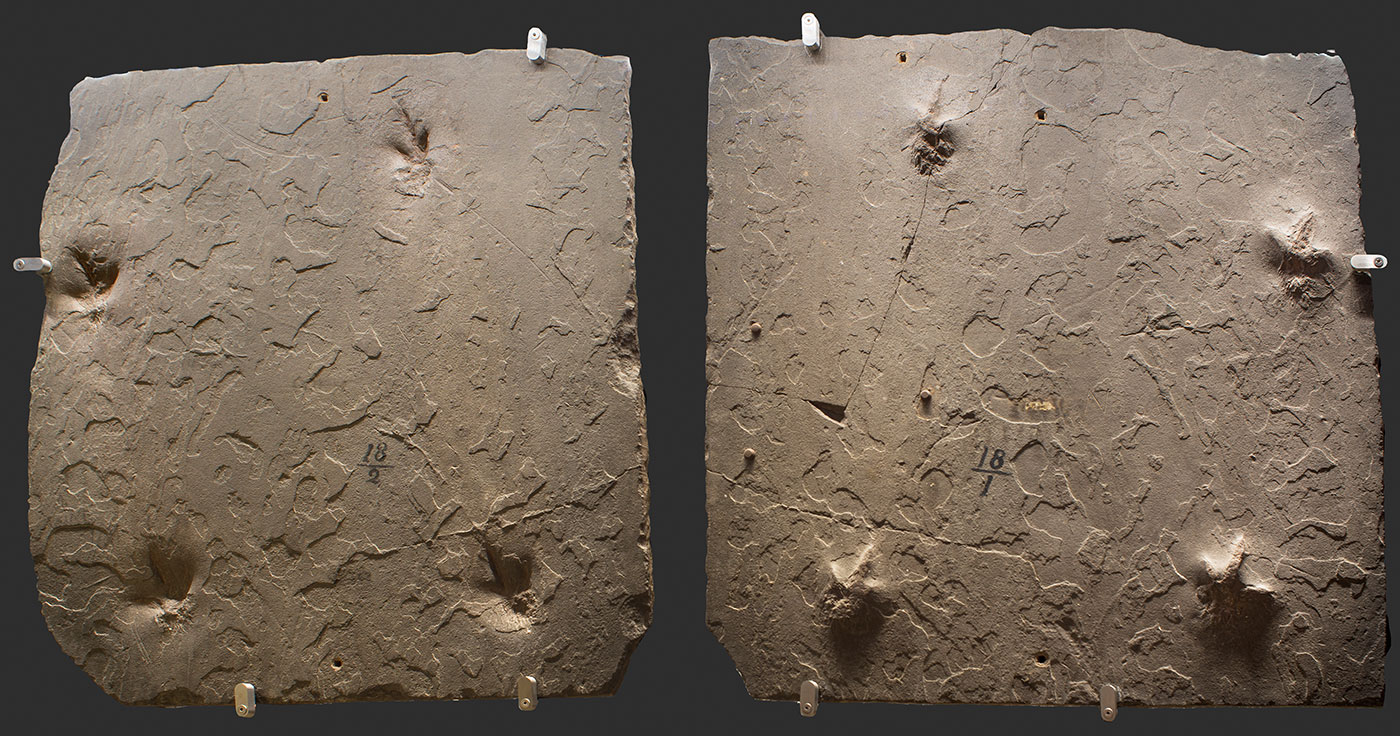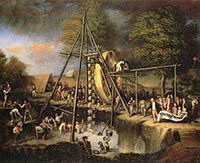 MENU
MENU
 MENU
MENU

This slab of sandstone is the actual sidewalk stone found by Dexter Marsh in 1835. Image courtesy of Beneski Museum of Natural History at Amherst College.
The weather was mild in early March of 1835, and in Greenfield, Massachusetts, a town of about 1,500 tucked into the Connecticut River Valley, a laborer was busy laying new sidewalks. Dexter Marsh, the town’s handyman, was 29 years old, strong and vigorous. He had quarried sandstone for the sidewalk from nearby Montague and hauled it to Greenfield’s Clay Hill, near the town hall and his own small home. In the process of preparing to lay a slab, he pried it apart between two layers and was surprised to see what looked like turkey footprints pressed into one side and the same exact shapes raised up on the side facing it.
Dexter had grown up too poor to go to school regularly, but he would have known what fossils were and perhaps had seen fossil fish in the dark layers of shale by the river. The scant evidence of his life shows an inquisitive mind with a lively interest in learning; perhaps he read news about geology in the local newspaper, whose four weekly pages of local, national, and international news carried science articles, too, much like the science sections in newspapers today. In western Massachusetts as in other parts of the country, Britain, and continental Europe, surveying, the digging of canals, laying of railways, and other activities of industrial development had uncovered increasingly deep layers of earth. The excitement from seeing these new exposures, coupled with the fossil shells and bones that sometimes appeared, inspired nature lovers to add "geologizing" to their outdoor activities.
If Marsh had not yet been bitten by the geology bug, he certainly was now. He was curious. These weren't bones, but surely they were old footprints preserved in rock, like fossils. How and when did they get there? Why were these particular footprints preserved? Were there more? One of his neighbors, a young physician named James Deane, thought the discovery so curious that he wrote to two scientists, Edward Hitchcock at Amherst College and Benjamin Silliman at Yale College, to see what they thought about the mysterious marks.
 James Deane
James Deane
 Edward Hitchcock
Edward Hitchcock
 Dexter Marsh
Dexter Marsh
 Charles Willson Peale
Charles Willson Peale
 Benjamin Silliman
Benjamin Silliman
 Exhuming the Mastodon, Charles Willson Peale
Exhuming the Mastodon, Charles Willson Peale
 Fossil Slabs Found by Dexter Marsh
Fossil Slabs Found by Dexter Marsh
 "Geology" Story, Greenfield Gazette & Herald Newspaper, April 3, 1835
"Geology" Story, Greenfield Gazette & Herald Newspaper, April 3, 1835
 "Tough Stories Authenticated" Story in the Gazette & Herald Newspaper, April 3, 1835
"Tough Stories Authenticated" Story in the Gazette & Herald Newspaper, April 3, 1835
 Clay Hill, Greenfield, 1861
Clay Hill, Greenfield, 1861
 Yale College
Yale College
 Amherst College
Amherst College